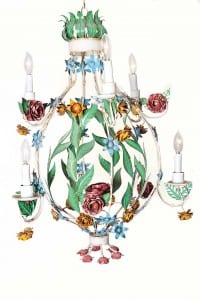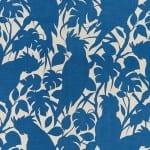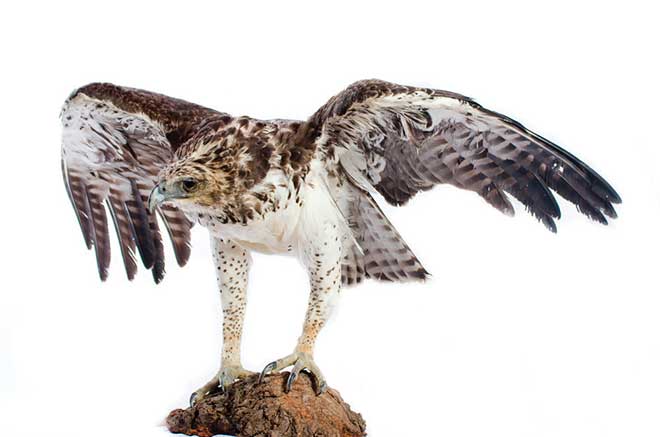trading tips: taxidermy
Let me start by stating I am neither advocating nor condemning the use of animals in design. But in my profession, I have had to incorporate creatures into a design scheme by request of the homeowner on more than one occasion. I thought it might be interesting to discuss a few facts about the process and the costs involved.
The word taxidermy has Greek origins meaning ‘arrangement of skin.’ This process can be done with mammals, fish, birds, reptiles and amphibians. (Let’s not confuse our plastic surgeon with a taxidermist, although they do have similar practices when you think about it!)
People were preserving birds in their curiosity cabinets as early as the mid 18th century. The craze had spread through England, Germany, Denmark and France. Tanners were popping up in every city and village. The earliest ‘stuffed animals’ were just that, stuffed with cotton rags. As time went on, wire was added to help maintain the shape of the poor creature being celebrated through its capture. The process has continued to improve over time and follows a strict code of ethics.
The Victorians, who were known for their penchant for world travel and collecting things, brought the idea of taxidermy as a design element to a whole new level and artform when it came to decorating their homes. Queen Victoria herself was an avid collector, but the middle classes, too, could appreciate and afford this type of home garniture. Do keep in mind that well-respected museums have used taxidermy methods for centuries to record and preserve specimens both rare and common.
I was interested to know what the costs of this process might be for various creatures. A moose can cost $8,500, while a squirrel is about $300 (clearly not priced by the pound). A full-size giraffe would run in the ballpark of $22,650! Need I remind you that these costs are additional to the trip to Africa, lodging, guides, meals and airfare? That could be quite an expensive room decoration! A mink is around $500. (Frankly, I think money would be better spent on a coat; at least the mink could attend parties and get out once in a while.)
Believe it or not, there is currently a secondhand market for taxidermy pieces. Searching eBay, I found items ranging from $50 to $1,500, quite the bargain when you consider what it cost to have them stuffed originally. I myself owned a stuffed pheasant that my uncle shot and had preserved. I inherited it upon his death and have enjoyed it for many years. I decided to pass it on to some friends who have a much more grand and appropriate space to display him, and he now brings character to their home.
come to terms with … tole chandeliers
Tole by definition is “enameled or lacquered metalware, usually with gilt decoration, often used, especially in the 18th century, for trays, lampshades, etc.” The origin of the word comes from the French term ‘tole peinte du lac,’ which refers to painted tin. The process began in Wales in the late 17th and early 1 8th century with John Hanbury. As demand grew, these products were shipped to Europe and the American colonies. Eventually France, Italy and The Americas began to produce their own versions.
8th century with John Hanbury. As demand grew, these products were shipped to Europe and the American colonies. Eventually France, Italy and The Americas began to produce their own versions.
Now that we have defined it, I want to focus on a specific type of tole: chandeliers. Italy has been the leader and trendsetter for this whimsical style of lighting for many years. Early forms of this product, dating from the late 19th century into the mid 20th century (before the end of the 1930s), were of superior craftsmanship and highly sought after. If you happen upon a piece marked ‘Made in Italy’, you really have something special.
In part that’s because the earlier artform used more substantial metals than later models popularized after the ’30s. Additionally, the early pieces had more detailed artwork, with flora and fauna more artfully detailed and with greater depth of color. This was achieved by mixing the paints on the brush before applying to the metal.
Of course we all have lived long enough to realize that trends and tastes change. Often these pieces were painted fantastic vibrant colors or done in the ‘sophisticated’ gilt gold. Both still have their appeal and can add a bit of whimsy to almost any space, from powder rooms to dining rooms and bedrooms.
Prices for these chandeliers range from around $200 to upward of $5,000, depending on quality, age and condition. A new approach is to paint the fixture all one color to give it a more modern feel. No matter what your style, tole chandeliers are worth considering if you have the courage.
design redux: 50 shades of snorkel blue
 One of the Pantone colors for the company’s fashion forecast this year is Snorkel Blue 19-4049. This maritime-inspired shade is not quite navy (it’s a bit brighter and more joyous), but plays well with it and other colors. Ever popular as a timeless element in any room, the color works so well with so many other colors that if it were a person, it would be considered the favorite family member at any gathering.
One of the Pantone colors for the company’s fashion forecast this year is Snorkel Blue 19-4049. This maritime-inspired shade is not quite navy (it’s a bit brighter and more joyous), but plays well with it and other colors. Ever popular as a timeless element in any room, the color works so well with so many other colors that if it were a person, it would be considered the favorite family member at any gathering.
And as you’d expect, it translates well in paint, fabric and wallcovering. Give it a try, if you haven’t already!







